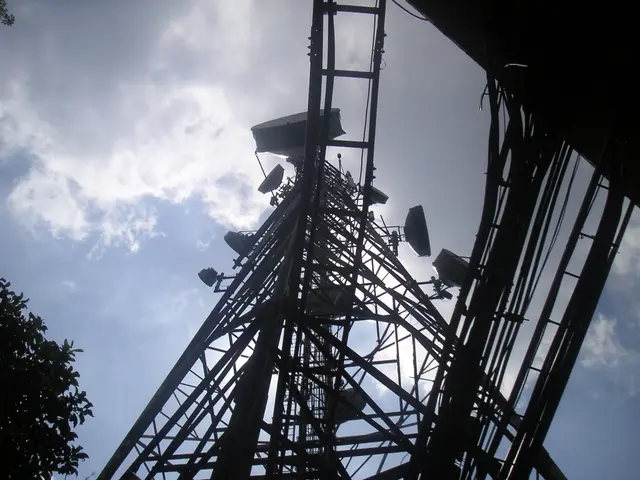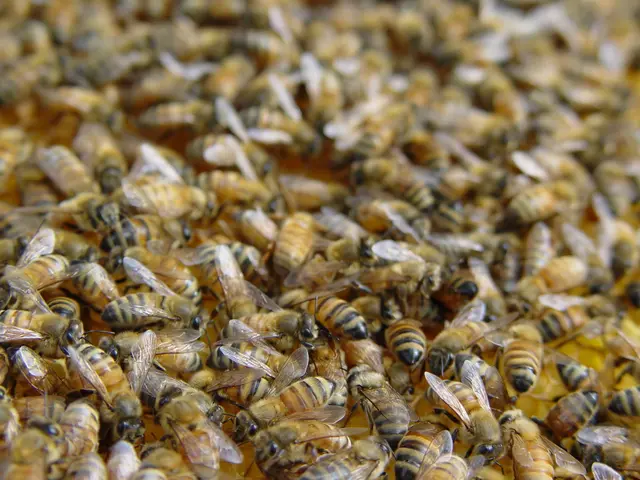Artificial Intelligence Magnifies Photos Up to 256 Times, Producing Stunning Detail
In the digital realm, a fuzzy image of a flag sharpens before your eyes, revealing threads and creases. It's not just pixels stretching, but AI recreating what a superior camera might capture. This is the magic of Chain-of-Zoom (CoZ), a novel AI framework developed by researchers at KAIST AI. Their goal? To dramatically enhance low-resolution images while preserving sharp, believable details.
Traditional single-image super-resolution (SISR) systems struggle when pushed beyond their limits. They randomize pixels, hoping to guess what's missing. But these models can't handle the unknown.
CoZ solves this issue by breaking the zooming process into manageable steps. No longer does it stretch an image 256 times at once, leading to blurring or hallucinations. Instead, it builds a staircase, each rung a small, calculated zoom, built upon the last. At each step, a well-trained super-resolution model refines the image, and a Vision-Language Model (VLM) provides descriptive prompts to help the AI imagine the next, higher-resolution version.
"The second image is a zoom-in of the first image. Based on this knowledge, what is in the second image?" This type of prompt helps guide the AI, acting like verbal cues handed to an artist.
This interplay between images and language is what sets CoZ apart. As you zoom in further, visual clues fade, and context disappears. That's when words matter most. But generating the right prompts isn't always easy. Off-the-shelf VLMs can repeat themselves, invent odd phrases, or misinterpret blurry input. To keep the process grounded and efficient, the researchers used reinforcement learning with human feedback (RLHF).
In the real world, CoZ produces images that stand out for their clarity and texture. Across four magnification levels, it outperforms alternatives, especially at higher scales. But it's not just about the numbers. Its flexibility makes it more accessible and opens the door to applications that require fast, high-fidelity zoom without massive computational cost.
Applications span across fields, including medical imaging, surveillance footage, cultural preservation, and scientific visualization. CoZ has the potential to aid diagnosis, read distant license plates or facial features, restore old photos with unprecedented clarity, and enhance microscopic and astronomical visualizations.
However, with great power comes great responsibility. The ability to create high-fidelity images from low-resolution inputs raises concerns about misinformation or unauthorized reconstruction of sensitive visual data. As always, transparent development and responsible use are key.
In essence, Chain-of-Zoom provides a clearer path forward, not just for enhanced images but also for super-resolution as a whole. Instead of stretching images beyond their breaking point, it takes it slow, one zoom at a time. The result? Clearer images and a clearer vision of possibilities.
Artificial intelligence, such as the one developed by researchers at KAIST AI, can revolutionize the technology sector, particularly in the fields of science and tech. For instance, the novel AI framework, Chain-of-Zoom (CoZ), can greatly enhance low-resolution images while preserving crisp details, surpassing the limitations of traditional single-image super-resolution (SISR) systems.
This technology's practical applications extend further, benefiting various fields like medical imaging, astronomical visualization, cultural preservation, and even surveillance. With CoZ, we can expect improvements in diagnoses, facial recognition from distant sources, restoration of old photos, and enhancement of microscopic and astronomical visualizations.
At the same time, it's crucial to consider the ethical implications of AI-enhanced images, especially the potential for spreading misinformation or unauthorized reconstruction of sensitive visual data. As with every advancement in artificial intelligence, the importance of transparent development and responsible use cannot be overstated.








